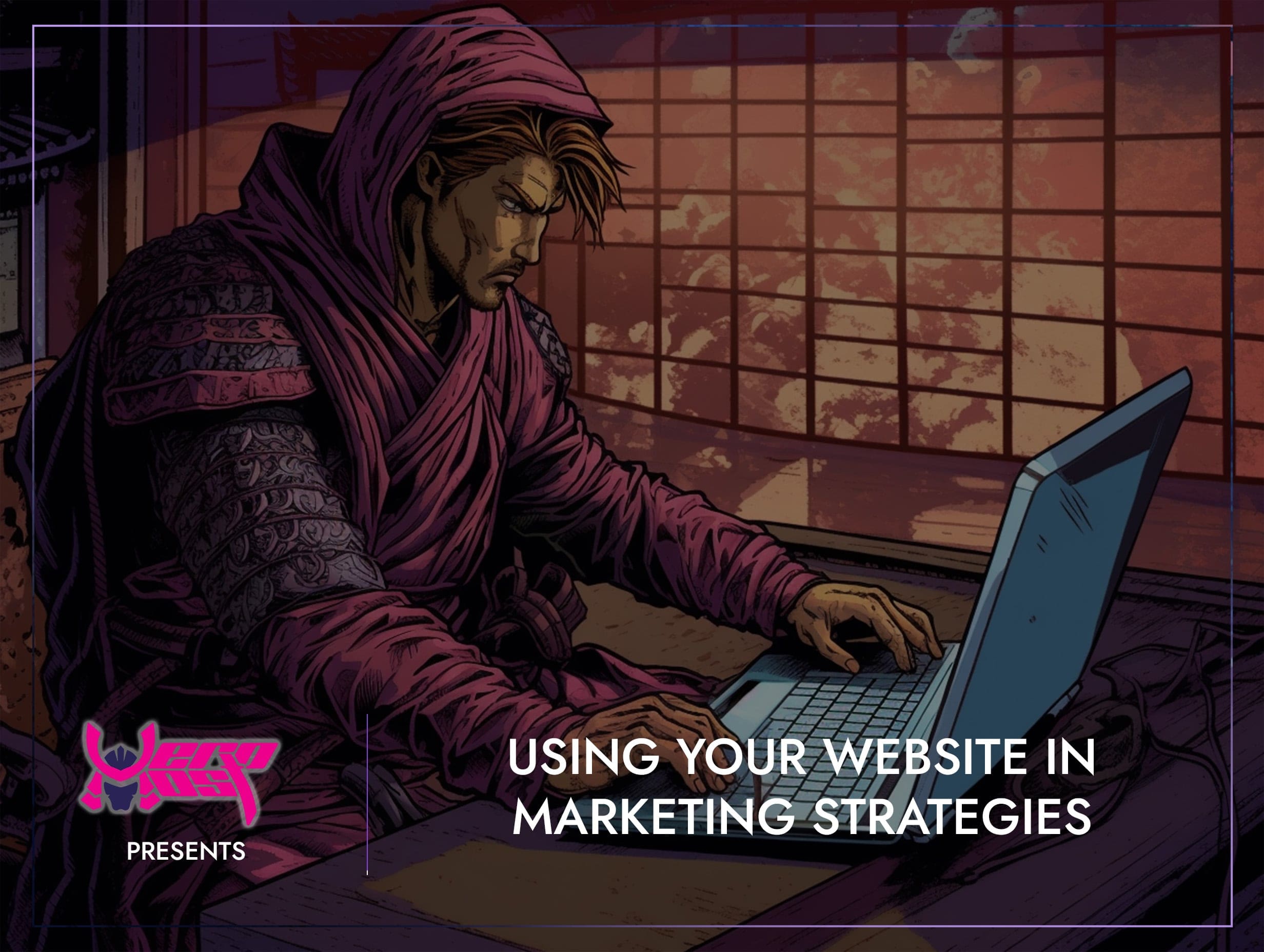How to Use Your Website in Marketing Strategies
- Home
- Web Design
- How to Use Your Website in Marketing Strategies

- Mikey Ryu
- April 21, 2024
- 0
How to Use Your Website in Marketing Strategies
In the digital age, where consumers are increasingly turning to the internet to discover, research, and purchase products and services, having a strong online presence is essential for businesses looking to thrive. At the heart of this online presence lies the company website—a powerful platform that serves as the cornerstone of digital marketing strategies. However, simply having a website is not enough; to truly harness its potential, businesses must integrate their website seamlessly into their broader marketing strategies. In this blog, we’ll explore the various ways businesses can leverage their website in marketing strategies to attract, engage, and convert their target audience effectively.
1. Content Marketing:
Content marketing is a cornerstone of modern digital marketing strategies, and your website serves as the central hub for your content efforts. Develop a comprehensive content strategy that aligns with your business objectives and target audience’s interests, and create high-quality content that educates, entertains, or inspires your audience. Publish blog posts, articles, videos, infographics, and other valuable content on your website regularly to attract visitors, establish authority in your industry, and drive organic traffic from search engines. By leveraging your website as a content distribution platform, you can amplify the reach and impact of your content marketing efforts and drive meaningful engagement with your audience.
2. Search Engine Optimisation (SEO):
Optimizing your website for search engines is crucial for improving its visibility and driving organic traffic. Conduct keyword research to identify relevant search terms and incorporate them strategically into your website’s content, meta tags, and headers. Focus on creating high-quality, informative content that addresses your audience’s needs and interests while adhering to SEO best practices. Regularly monitor your website’s performance using analytics tools to track keyword rankings, traffic sources, and user behaviour, and make data-driven adjustments to optimize your SEO strategy over time. By prioritizing SEO, you can increase your website’s visibility in search engine results pages (SERPs) and attract qualified traffic that is more likely to convert into customers.
3. Conversion Rate Optimisation (CRO):
Conversion rate optimization (CRO) focuses on improving the percentage of website visitors who take a desired action, such as making a purchase, signing up for a newsletter, or filling out a contact form. Conduct A/B testing on different elements of your website, such as headlines, calls-to-action (CTAs), forms, and page layouts, to identify which variations drive the highest conversion rates. Continuously iterate and refine your website based on data-driven insights to optimize the user journey and maximize conversion potential. By fine-tuning your website’s design, content, and functionality, you can enhance the user experience and increase the likelihood of visitors taking desired actions that align with your marketing objectives.
4. Email Marketing:
Your website can be a powerful tool for capturing email leads and nurturing them through targeted email marketing campaigns. Implement lead capture forms, pop-ups, or gated content on your website to encourage visitors to subscribe to your email list. Offer valuable incentives such as discounts, free resources, or exclusive content to incentivize sign-ups. Once you’ve built your email list, segment your subscribers based on their interests, preferences, or behaviour, and tailor your email marketing campaigns accordingly. Send personalized, relevant content to your subscribers to keep them engaged, nurture relationships, and drive conversions. By integrating your website with your email marketing efforts, you can leverage the power of email to build stronger connections with your audience and drive revenue growth.
5. Social Media Integration:
Integrating social media into your website marketing strategy can amplify your brand’s reach, engage your audience, and drive traffic back to your site. Add social sharing buttons to your website’s content to encourage visitors to share it with their networks, thereby increasing its visibility and reach. Additionally, embed social media feeds or widgets on your website to showcase your social media presence and encourage visitors to follow you on social platforms. Promote your website content on social media channels to reach a wider audience and drive traffic back to your site. By integrating social media seamlessly into your website, you can create a cohesive online presence that strengthens your brand and fosters engagement with your audience.
Conclusion:
In conclusion, your website is a powerful asset that can significantly impact the success of your marketing strategies. By leveraging your website for content marketing, SEO, CRO, email marketing, and social media integration, you can attract, engage, and convert your target audience effectively. By aligning your website with your broader marketing objectives and continuously optimizing its performance based on data-driven insights, you can unlock the full potential of your website as a key driver of your marketing efforts. With a strategic approach and a focus on delivering value to your audience, your website can become a valuable asset that drives business growth and success in the digital age.
Search
Categorys
- Branding (12)
- Business Growth Guides (3)
- Business Insights (3)
- Content Marketing (43)
- Domain Authority (19)
- Email Marketing (28)
- Google Analytics & Search Console (5)
- Hack or Not (2)
- Hero Host News (0)
- Inbound Marketing (32)
- Lessons From Asia (40)
- Marketing Guides (11)
- Martial Arts Journey (14)
- Outbound Marketing (8)
- Search Engine Optimisation (SEO) (41)
- Social Media Marketing (38)
- Web Design (20)
- Website Hosting (4)
- Wordpress (2)






